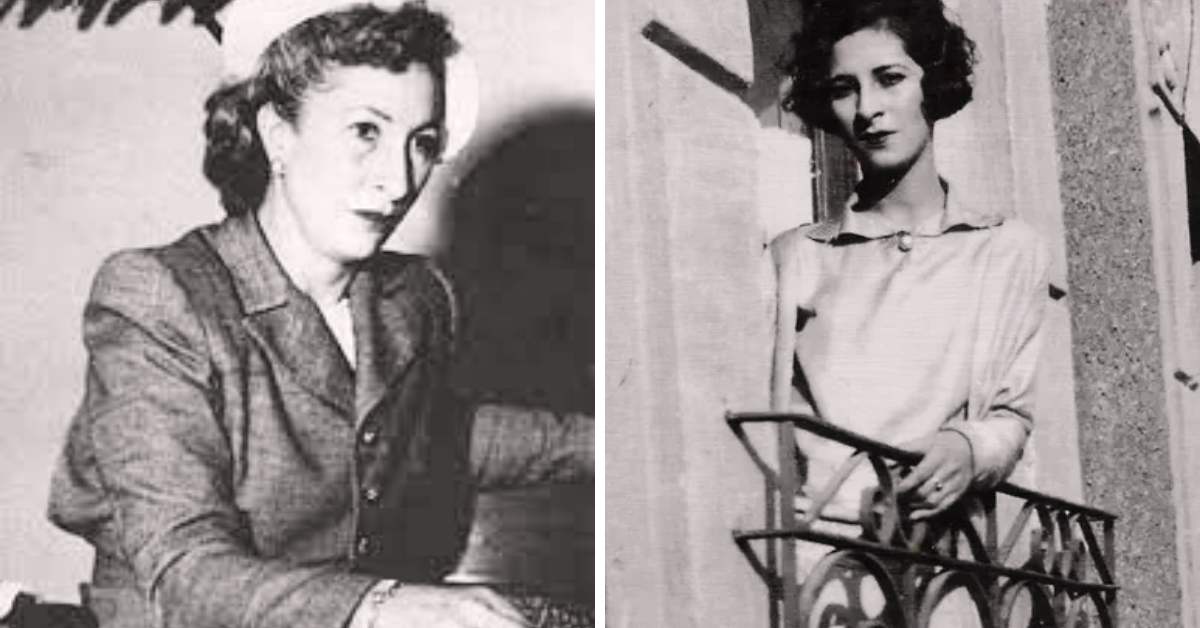Google Doodle Honors Luisa Moreno: Labor Leader Who Beat the Odds!
Google is honoring Guatemalan-American journalist and labor organizer Luisa Moreno to kick off Hispanic Heritage Month. Moreno united and mobilized Spanish-speaking groups in the U.S. around worker’s rights almost 100 years ago.
The Google Doodle for Friday shows Moreno with a speaker and a group of people holding hands. Juliet Menéndez, the artist who is also Guatemalan-American, told NPR that she wanted to show how Moreno brought people of different races and classes together.
Menéndez also said that the linked arms were meant to show how strong people are when they work together and to hint at striking. She also used the scales of justice and bits of yellow to show that Moreno was honest and wanted to shine a light on the truth. There are dandelions coming out of the speaker.
Why is Google Celebrating Luisa Moreno Today?
In honor of US Hispanic Heritage Month, which runs from September 15 to October 15, Google is recognizing Moreno’s work and efforts. The guest artist from Guatemala City, Juliet Menendez, drew the picture of Moreno holding hands with people from the different areas she worked hard for.
Today’s #HispanicHeritageMonth #GoogleDoodle celebrates Guatemalan American civil rights and fair labor activist Luisa Moreno who dedicated her life to unifying Spanish-speaking communities and organizing workers.
Learn more about her story —> https://t.co/dXrd0G9oFV pic.twitter.com/1OB3dJJWZs
— Google Doodles (@GoogleDoodles) September 15, 2023
Google wants folks to get curious about Moreno’s life and how she, along with the stories of Latinos in the US, shaped our culture.
Who is Luisa Moreno?
Born in the early 20th century, around 1906 or 1907, in Guatemala, Moreno discovered as a young girl that her nation denied women the right to higher education. Challenging this norm, she passionately advocated for greater academic opportunities for females. Eventually, her endeavors bore fruit, as corroborated by online sources.
After a short time as a journalist, Moreno went to New York City while she was still in her 20s. Police violence against Latino protests and bad working conditions in garment factories made her want to get involved again.
In 1935, she joined the American Federation of Labor, taking on a role as an expert organizer. She extended support to employees nationwide, primarily in the food and tobacco sectors. Six years later, Moreno was chosen as vice president of the United Cannery, Agricultural, Packing and Allied Workers of America.
Moreno’s most important work was trying to bring the Latino community together. In 1938, she started the National Congress of Spanish-speaking Peoples or El Congreso del Pueblo de Habla Espanol. This is thought to be one of the first national efforts to get people from Spanish-speaking countries to fight for better working conditions and fair treatment for all Latino workers.
In 1949, a pamphlet about Moreno’s situation said that the federal government finally took notice of her success as a labor leader and started threatening to deport her.

“They can talk about deporting me, but they can never deport the people that I’ve worked with and with whom things were accomplished for the benefit of hundreds of thousands of workers,” Moreno said in the pamphlet, later obtained by the National Museum of American History.
In 1950, Moreno had to depart the U.S., leading her back to countries in Latin America. She pursued her organizing efforts in places like Mexico, Cuba, and Guatemala. She passed away in 1992.
Why Did Luisa Moreno Change Her Name?
The Brooklyn Museum says that Moreno’s name when she was born was Blanca Rosa López Rodrguez. She was born into a well-known family in Guatemala, so she changed her name to protect them.
How Did Luisa Moreno Impact History?
Moreno was also a leader with a clear vision who fought for the civil rights of Latinos and other minorities. In 1938, she helped start the National Congress of Spanish-speaking Peoples. The initial civil rights organization in the U.S. dedicated to the Latino community was established by her.
In 1939, she led a big meeting called the Congreso de Pueblos de Habla Española. Over 1,200 people from all over the U.S. and Puerto Rico came to discuss things like school, health, voting, immigration changes, and fair treatment laws.
She also supported many important causes. She helped with the work of César Chávez and Dolores Huerta for Mexican-American rights, stood by Dr. Martin Luther King Jr. in his fight for Black people’s rights, and backed women’s rights efforts led by Betty Friedan.
Love reading about people’s lives? Visit our site for more cool stories about famous People:
- Who is Mikey Madison? Meet The Rising Star of Hollywood!
- Who is Carmine Di Sibio? The Man Who Turned EY into a Global Force!
What Happened to Luisa Moreno?
During the Cold War, the US didn’t like Moreno’s political ideas. In 1950, a US committee told her to leave, thinking she had bad intentions.
Instead of fighting in court, Moreno left for Guatemala with her daughter. She wrote articles and advocated for causes there until she passed away in 1992.
Contents


